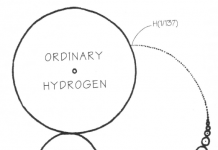Two weeks ago, I wrote about the emerging wood pellets industry and how this form of biomass was experiencing rapid growth as a coal substitute in power generation, mostly in Europe as a result of renewable energy and climate regulations. In the time since I wrote that article, I have been looking for ways to invest in the global wood pellets sector. Unfortunately, my search came up mostly empty (except for 1 stock discussed below).
In response to my previous post, a reader pointed me to an article Joe Romm at Climate Progress had recently written about biomass co-firing. In that article, we learn that co-firing biomass with coal has the technical and economic potential to replace at least 8 GW of America’s coal-based generating capacity by 2010 (~2.4% of the 2007 nameplate coal installed capacity), and as much as 26 GW by 2020 (probably somewhere between 5 and 8% by then). We also learn that demonstrations and trials have shown that biomass can replace up to about 15% of the total energy input at coal-fired plants with only minor modifications – this is thus probably a good figure to go by given that international trade in pellets can overcome supply limitations in the US.
As I was searching for ways to invest in the wood pellets sector, I came across some additional information on the current state of the market provided by Andritz Group. In 2008, the global market for wood pellets was estimated at around 9 million metric tons in volume, which replaced around 6.3 million metric tons of coal (you thus need around 1.43 metric ton of pellets per ton of coal displaced). Whereas coal packs in about 24 gigajoules of energy per metric ton, wood pellets contain about 17 GJ/metric ton (17 x 1.43 = 24.31). To put the volume numbers into perspective, over the past few years, the US electric power sector has been using around 1.04 billion short tons of coal per year, or about 944 million metric tons. 15% of this total would represent around 144 million metric tons of coal, or about 206 million tons of pellets. There is thus plenty of theoretical room to grow in the US alone, even if you cut that number down by 50%.
The fuel substitution from those 9 million metric tons of pellets has helped save around 7.5 million metric tons of CO2 emissions. Assuming CO2 prices of €25 ($33)/metric ton, this could be worth around $248 million gross, from which the fuel cost difference would be subtracted to get to a net figure. Although I did not run the numbers, it is safe to assume this difference yields a positive amount given how popular wood pellets have become in Europe for exactly that purpose (i.e. meet regulatory limits on greenhouse gas emissions).
What drew my attention to wood pellets the most is that they offer a standardized means of moving carbon-neutral energy around, much in the same way crude oil or coal are used to transport carbon-positive energy (of course neutral and positive are relative terms in this context, but let’s leave that discussion for another time).
The North American forest industry is currently facing a difficult time, and using biomass for power generation is one means of killing two birds (the environment and the economy) with one pellet, although as the numbers above indicate it is no a panacea. In fact, wood biomass will most likely never account for more than 10-15% of total power production and is unlikely to be cost competitive with coal without a price on carbon. However, given that a price on carbon is forthcoming in the US, it is fair to assume that wood pellets will represent one of those fundamental bridge solutions to reduce the costs of moving to a de-carbonized economy. This is a point Joe Romm makes in his articles on the topic.
However, the trade in wood biomass for power generation cannot be expected to scale up if a standard isn’t adopted around which transportation logistics and technology requirements can be established. Wood pellets provide this standard. This is why I have left other wood biomass sources such as wood chips or waste wood from logging operations out of my analysis. If a sizeable market for wood biomass is to emerge, it will have to be in the form of a market for pellets.
A Wood Pellet Stock
The wood pellet production process is relatively simple (see video below): (1) wood material is dried and turned into a dough-like mass by being passed through a hammer mill; (2) and this mass is then squeezed through a high-pressure die with holes of the size required (i.e. standard pellet size) – the pressure causes a rise in temperature which causes the lignin in the wood to plastify and hold the pellet together.
Andritz Group (ADRZF.PK) currently has, according to itself, an about 50% share of the global market for wood pellet production equipment. Andritz is an Austrian firm that provides equipment and services for the global hydro power, pulp & paper, steel, animal feed & biofuels and other industries. In fact, following the acquisition of a large chunk of GE Energy’s hydro power operations, Andritz cemented its position as a dominant player in large hydro globally.
The main problem with Andritz is that its US listing is on the Pink Sheets Grey Market (this is common for foreign shares), making it hard for some investors to trade the stock through their brokers. Moreover, trades on the Grey Market are not always efficient as the lack of a Market Maker for the security can result in lower liquidity and higher prices. The quality of the company is not problematic however, as Andritz is a blue chip stock in Austria.
Despite this limitation, Andritz is, in my view, an interesting beast. In 2008, revenue (€3.61 billion/$4.85 billion) was broken down as follows between the business segments: Hydro (electromechanical systems and services for large hydro power stations), 33%; Pulp & Paper (equipment and services for all forms of pulp and paper production), 37%; Metals (production and finishing lines for metallic strip), 16%; Environment & Process (equipment and services for solid/liquid separation for various industries), 10%; and Feed & Biofuel (equipment and services for production of animal feed and biomass pellets), 4%.
Balance sheet-wise, the company is well-positioned to weather the current storm: although it had gross debt (bonds, bank debt and leases) of about €432 million ($580 million) as at the end of 2008, its €822 million ($1.1 billion) in cash and marketable securities gave it ample net cash (debt minus cash & equivalents) of about €390 million ($524 million). The current ratio is only 1.29. However, around 35% of current liabilities are accounted for by a revenue recognition liability which has no bearing on liquidity. Dividing only cash and equivalents €822 million ($1.1 billion) by accounts payable (€306 million/$411 million) plus the current portion of debt and lease obligations (€37 million/$50 million) yields a ratio of around 2.4, which is very healthy and even begs the question: what is the company planning on doing with all this cash?.
Operationally, Andritz has been stable over the past five years, maintaining stable EBITDA, EBIT and net margins in the neighborhood of 7.5%, 6.0% and 4.2% respectively. However, cash flow from operations has been somewhat volatile, standing at €255 million ($343 million) in 2008 but only €33 million ($44 million) in ’07.
The stock is currently off around 65% from its high of May 2008 (the Pink Sheets listing). Andritz is trading at a trailing 12-month PE of about 7.9x and price-to-book of about 2.08x. On a PE basis, that is a cheap stock, especially given that the company’s scale and market share in the hydro segment probably confer it a certain amount of earnings power. The stock pays a dividend per share of €1.10 for a yield of 5.08%, which is quite attractive in my view (this information is for the Frankfurt listing so one would need to inquire to his/her broker to know what the figures are for US investors purchasing the Pink Sheets security).
Conclusion
Although the wood pellets concept is attractive (I certainly thought so when I first attended a workshop on it), the global trade in them remains comparatively small and largely Europe-focused for the time being. As a result, finding ways to play this emerging sector in the stock market is rather difficult. However, if activity by private firms is any indication of the future of this industry, then it could turn out to be interesting niche to be in, although it will not grow past a certain point and is no panacea.
The one stock I identified as global leader in wood pellets, Andritz, is actually attractive for a number of other reasons. The exposure to large hydro is very interesting, in my view. Although certain greens find large hydro objectionable, most individuals and organizations concerned about climate change agree that it’s better than the fossil-fuel alternatives, and the sector is forecasted to get a boost from installations in China and India over the next few years. The focus on industrial energy efficiency should also be of interest given the focus this area received in the Obama Stimulus Package.
But this is a stock that will unfortunately be hard or impossible to trade for many small investors. You might just have to wait a few more years to see more interesting plays on wood pellets emerge on a stock exchange near you!
The Wood Pellet Production Process: A Vid!
DISCLOSURE: Charles Morand does not have a position in Andritz.
DISCLAIMER: I am not a registered investment advisor. The information and trades that I provide here are for informational purposes only and are not a solicitation to buy or sell any of these securities. Investing involves substantial risk and you should evaluate your own risk levels before you make any investment. Past results are not an indication of future performance. Please take the time to read the full disclaimerhere.









Hydro is an interesting sector that’s also likely to see a revival; at least in upgrading older dams and adding generation to existing dams… another reason to like Andritz.
Good point Tom. Many large North American dams are actually due for an upgrade. This is one of those areas that may not experience furious growth but where, with a solid market share, sales should be forthcoming for a long time to come.
My big concern is the energy costs of pellet production. All capital costs aside, how much electricity/fuel is used to make this stuff? This could be like Bio-ethanol. It takes more energy to drive the tractors, product the fertilizers process the corn to create the ethanol than the energy you get out of it. The same applies to the tar sands.
Good point Scott. Until now, wood pellets have been made from sawmill residue, so it really was a way to add value to a waste stream. However, with the decline of the Canadian and US lumber industries and mill closures, it’s unclear where the feedstock will come from.
If you have to go out to the forest to harvest wood just for the purpose of making pellets, not only will the economics look a lot more shoddy but as you point out the net energy balance may be negative.
At the right price for CO2 emissions, the economics of many alternatives will start to make sense. However, the energy balance could be problematic.
Thanks for pointing this out.
A use for pellets could be in an external combustion engine such as the Cyclone Power unit. http://www.cyclonepower.com
CYPW
Could you comment on this approach please?
Barry:
I don’t know anything about those. I looked at the website and the technology appears to be for small applications. My worry there is that these are exactly the kinds of applications where batteries will probably make more sense than fuel.
As far as pellets go, I can’t really see this as providing a major use of pellets relative to co-firing coal plants, at least for the time being.
You might look at Astec as a play on equipment for the wood pellet market.